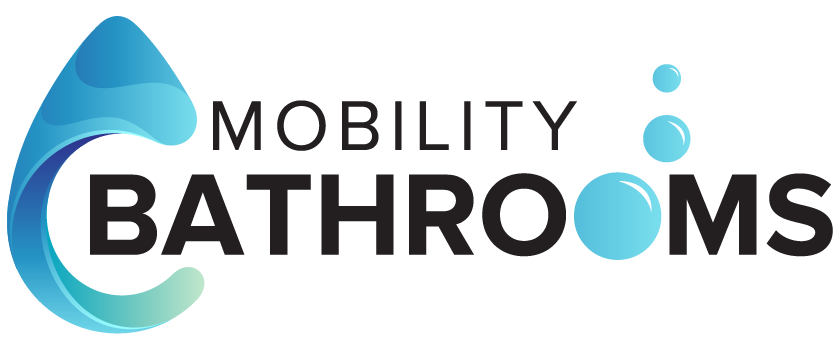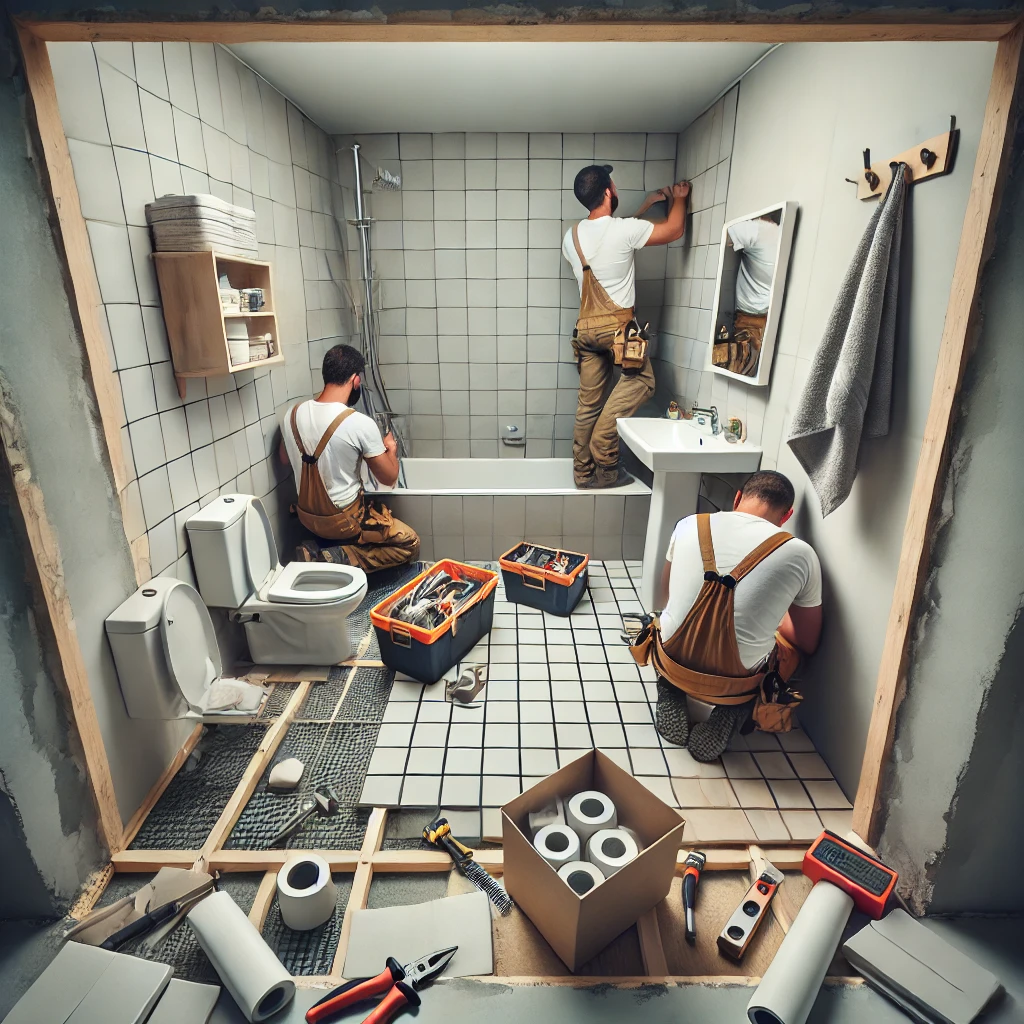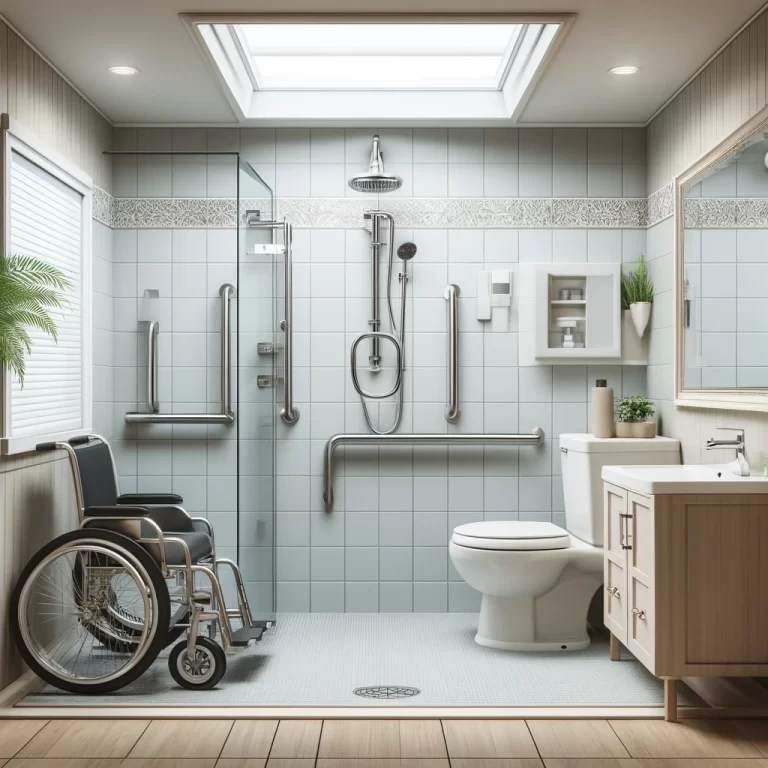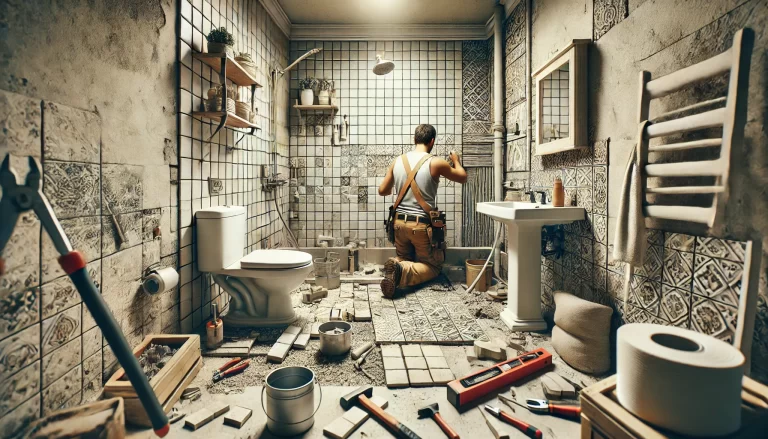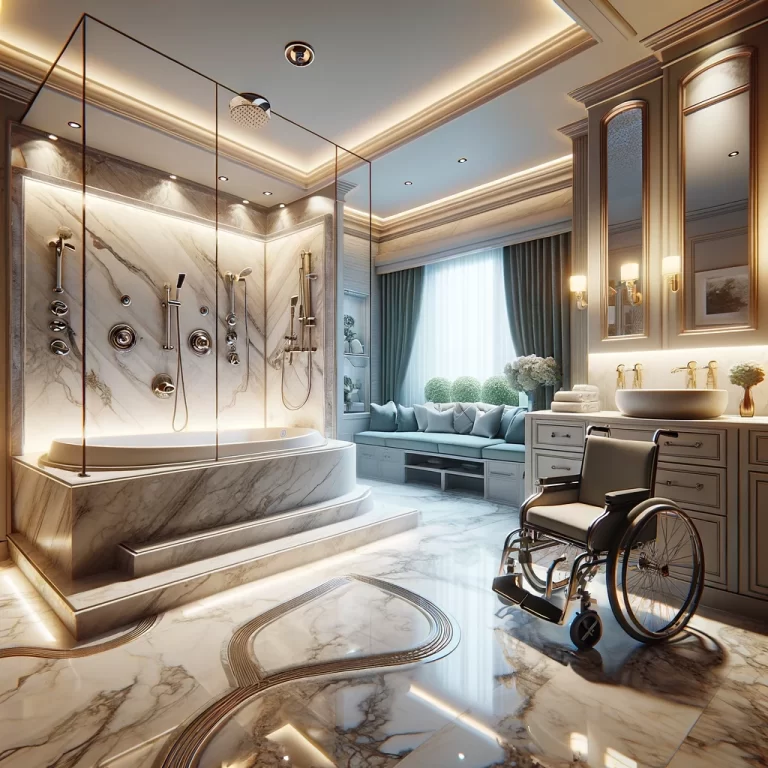What is the average price to install a bathroom UK
When contemplating the renovation or installation of a new bathroom within your residence, it is imperative to gain comprehension of the various factors that can influence the total cost of the project.
Elements such as the dimensions and arrangement of the bathroom, as well as the selection of materials and fixtures, can all play a role in determining the financial implications involved.
The ensuing discussion will delineate the average expenses associated with bathroom installation in the UK, provide insights into potential cost-saving measures, and underscore key considerations that should be taken into account prior to commencement.
Whether the aim is to refurbish an existing bathroom or create an entirely new one, it is advisable to persist in reading to acquire a comprehensive understanding of the projected costs associated with bathroom installation.
Factors Affecting Bathroom Installation Costs
When evaluating the expenses associated with the installation of a new bathroom in the United Kingdom, numerous variables must be taken into account. These factors include the dimensions of the bathroom, the preferred design aesthetics, and the quality of materials and fixtures to be used. Additionally, the total cost of the project may be impacted by labour costs, fees charged by professionals involved in the installation process, and adherence to relevant local construction regulations. Possessing a comprehensive understanding of these constituent elements is essential for securing accurate quotations and maintaining a prudent financial plan.
Size and Layout of Bathroom
The dimensions and configuration of the bathroom play a significant role in determining the total installation expenses, with larger spaces necessitating more materials and labour.
For example, in cases where the bathroom size is relatively compact, cost savings can be achieved by reducing the quantity of tiling and fittings involved. Conversely, in bathrooms with ample space featuring intricate layouts or multiple water outlets like dual washbasins or distinct shower and bath areas, one should anticipate an escalation in renovation costs.
Plumbing alterations also constitute a substantial element, particularly when extensive reconfigurations are mandated. A comprehensive understanding of how varying sizes and layouts impact the renovation process can help in more effectively budgeting and strategising for the project.
Materials and Fixtures
The selection of materials and fixtures is a critical factor in determining the expenses associated with the installation of a new bathroom, as the utilisation of high-quality options is typically correlated with increased costs. Opting for premium materials such as marble or natural stone for flooring can significantly enhance the aesthetic appeal of the space; however, this enhancement is accompanied by a higher initial investment.
In a similar vein, the choice of designer lighting fixtures and luxurious accessories has the potential to augment the overall ambiance of the bathroom, although it is imperative to strike a balance between these selections and the constraints of the budget. The key lies in finding a middle ground that reconciles quality with cost-effectiveness to create a bathroom that is both enduring and visually captivating.
Labour and Professional Fees
Labour and professional fees play a significant role in bathroom installation expenditures, particularly when engaging skilled tradespeople for specialised tasks such as plumbing and tiling. It is imperative to engage reputable professionals when undertaking a bathroom renovation project to guarantee the quality and durability of the executed work.
Detailed quotations offer transparency by outlining cost breakdowns, allowing for an evaluation of the services’ worth. Labour rates for tradespeople typically vary based on variables like expertise, location, and project intricacy. Professional fees commonly encompass services such as labour, materials, waste disposal, and any essential permits.
To ensure optimal value for expenditures, it is advisable to seek recommendations, review online feedback, and compare quotations from various professionals before making an informed decision.

Average Cost of Bathroom Installation in the UK
The cost of bathroom installation in the UK fluctuates significantly based on various factors, including the dimensions of the bathroom, the quality of materials and fixtures chosen, and the intricacy of the renovation endeavour. Typically, homeowners should anticipate expenditure within the range of £4,000 to £10,000. However, expenses may escalate for larger bathrooms or for those opting for more opulent designs.
Breakdown of Costs by Type of Bathroom
The breakdown of costs according to the type of bathroom, whether it is a small en-suite, a family bathroom, or a luxury master bath, can provide homeowners with a clearer understanding of the allocation of their financial resources.
In the case of a small en-suite, typically ranging from 20 to 75 square feet, the costs may vary based on the quality of fixtures chosen. Basic fixtures for this space could range from $3,000 to $7,000, excluding labour expenses.
Transitioning to a family bathroom, which is generally larger and requires more amenities, costs could increase to a range of $10,000 to $20,000.
Conversely, a luxury master bath, renowned for its opulent features and customised elements, may necessitate a budget exceeding $50,000, inclusive of high-end fixtures, intricate tiling, and premium finishes.
Ways to Save on Bathroom Installation
Reducing costs on bathroom installation can be achieved through a variety of strategies, such as choosing affordable materials and considering DIY options for particular elements of the project. By careful planning and successful discussions with contractors, homeowners can stick to their budget constraints without sacrificing the achievement of their envisioned results.
DIY vs Hiring Professionals
The decision between choosing to undertake a do-it-yourself (DIY) approach or hiring professionals for bathroom installation is contingent on several factors, including budget, individual skills, and the project’s complexity.
If one possesses prior experience with similar projects, opting for a DIY method can yield substantial cost savings and a sense of personal achievement. However, engaging in intricate plumbing or electrical work without the requisite expertise may lead to costly errors. On the other hand, hiring professionals ensures high-quality workmanship and may expedite project completion, albeit at a higher cost.
Tasks such as painting, tiling, or fixture installation are generally suitable for DIY endeavours, while more intricate plumbing or layout modifications may necessitate professional intervention to ensure safety and achieve optimal results.
Using Affordable Materials
Choosing cost-effective materials is a practical approach to maintaining bathroom installation expenses within budgetary constraints while upholding quality standards.
When selecting materials for bathroom surfaces, cost-efficient yet stylish tiles crafted from porcelain or ceramic can serve as an exemplary option. These tiles offer a blend of durability and aesthetic appeal, all while remaining budget-friendly.
In the realm of fixtures and accessories, it is advisable to opt for finishes in chrome or brushed nickel. Not only are these finishes economically viable, but they also present ease of cleaning and maintenance. To procure these materials at reduced costs, one may explore sales at local home improvement retailers or peruse online platforms for discounted alternatives.
A judicious balance between cost and longevity is imperative to ensure the enduring quality of your bathroom space while adhering to predetermined budgetary constraints.
Negotiating with Contractors
Engaging in negotiations with contractors can yield substantial cost savings in bathroom installation expenses, as many contractors are amenable to adjusting their rates or providing discounts for specific services. An essential strategy for effective negotiation is to procure multiple quotes from various contractors. This approach not only enhances comprehension of prevailing market rates but also furnishes leverage for negotiating a competitive price.
It is imperative to meticulously scrutinise the inclusions within each contractor’s pricing structure to preempt any unforeseen charges. Transparent pricing plays a pivotal role in the negotiation process, facilitating accurate assessment and comparison of offers. For optimal value realisation, articulating budget limitations and desired outcomes to contractors is advisable. Clear delineation of expectations and priorities enables collaborative efforts towards reaching a mutually advantageous agreement.

Important Considerations Before Installing a Bathroom
Before starting a bathroom installation project, it is essential to carefully assess several critical factors. These factors include compliance with building regulations, obtaining necessary permissions, and the overall design and functionality of the area. Thorough planning and effective project management are crucial elements to ensure a smooth and successful installation process.
Building Regulations and Permits
Compliance with building regulations and the acquisition of requisite permits are fundamental components of any bathroom installation endeavour, serving to ensure adherence to standards and mitigate potential legal ramifications.
A comprehensive understanding and adherence to local building codes are imperative, as they delineate the parameters for upholding safety protocols and guaranteeing the construction process conforms to stipulated quality benchmarks.
In the realm of bathroom installations, the necessity for various permits is contingent upon the project’s magnitude, encompassing plumbing permits for new fixtures or electrical permits for lighting fixtures.
These permits not only legitimise the ongoing activities but also serve as a mechanism for regulatory bodies to supervise the project’s progression and validate compliance with all requisite criteria.
An integral aspect of this procedural sequence involves inspections and certifications, wherein trained professionals assess the work to ascertain its alignment with regulations and adherence to quality standards.
Design and Functionality
The incorporation of a well-designed bathroom, balancing aesthetics and functionality, can significantly enhance the overall value and comfort of one’s home. In the process of creating a thoughtful bathroom design, careful consideration should be given to the layout to optimise space utilization and flow.
Accessibility is of paramount importance, necessitating the inclusion of features such as grab rails and non-slip surfaces to ensure safety. Personal preferences are pivotal in guiding the design process. It is advisable to select color schemes, fittings, and materials that align with one’s style preferences.
To improve usability, the integration of storage solutions, such as shelves or cupboards, can help declutter the space. The selection of durable and easy-to-clean materials is crucial to blending style with practicality. Through a well-conceived design approach, a bathroom can be transformed into a comfortable retreat for relaxation.
